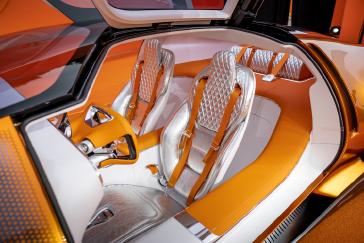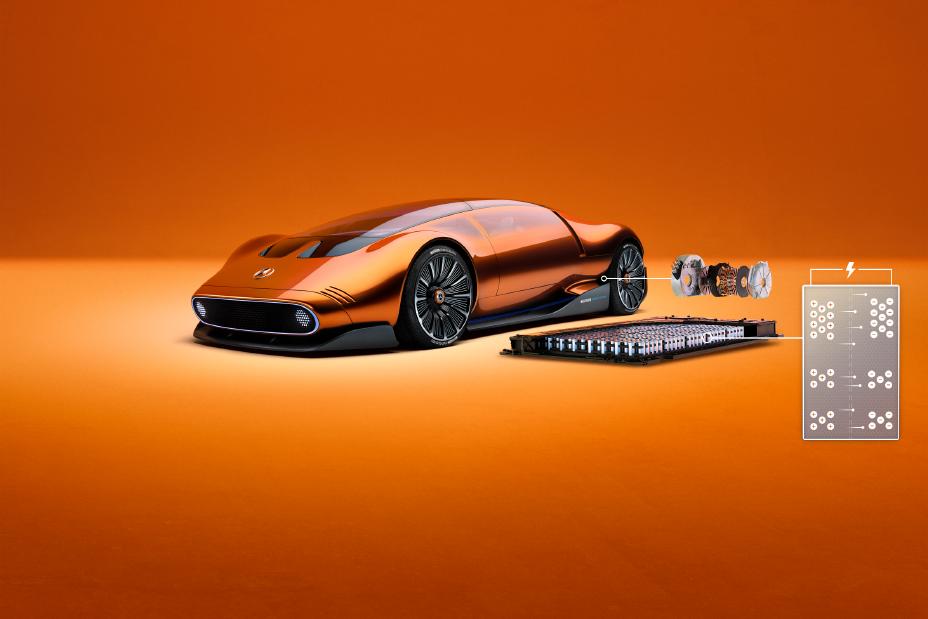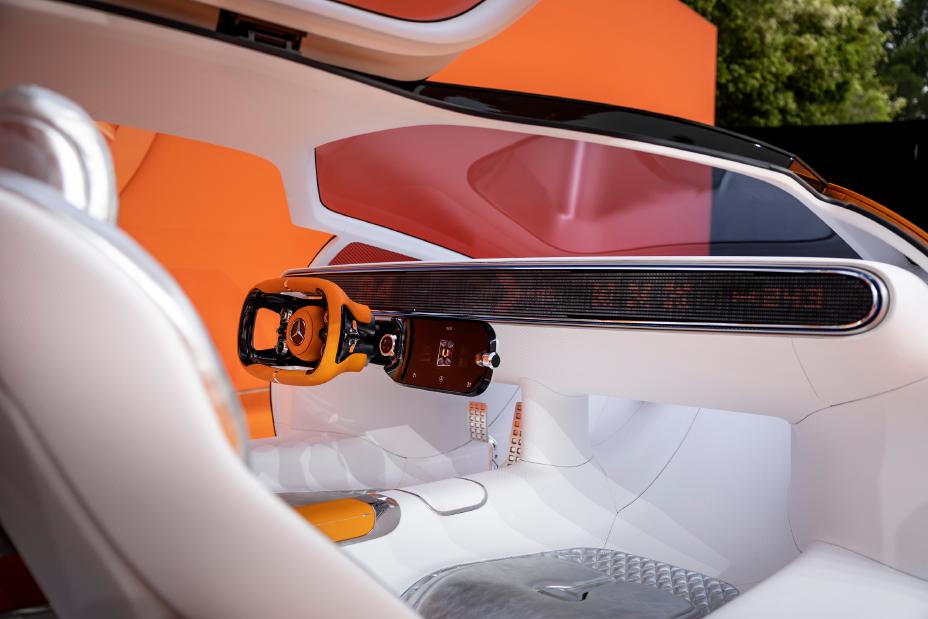

In 70s car magazines, the C-111 was a frequent if curious sight This sleek bright orange gull-winged, mid-engine, 2-seat sports car never saw production, but it was no mere show car either. 16 C-111s were produced to serve as rolling testing labs. Some were used first to test the possibilities of the Wankel rotary engine, which never came to fruition. Others had prototype turbo diesel engines, the learning from which found its way into several later models. It was also a test bed for polymer-based body shells that found their way into racing and other applications.
A Non-Retro Homage

Mercedes has reinvented and reinterpreted the C-111 with the Vision One-Eleven. This car will also likely never arrive at Mercedes-Benz of Plano, or any other dealership but will also serve as a technology testbed. Elements of the C-111 can be seen in the unadorned front with sort-of round headlights, badge placement on the hood accompanied by twin air-release openings painted in black, and of course, the gull-wing doors.
"Our goal at Mercedes-Benz is not to do styling – our goal is to create icons. To me, that makes the difference between mainstream design and luxury. Design icons like the Type 300 SL and C 111 – both with gullwing doors – are part of our DNA. says Gorden Wagener, Chief Design Officer, Mercedes-Benz Group AG. “These legendary vehicles were major inspirations for the iconic design of the Mercedes-Benz Vision One-Eleven. This is beauty and the extraordinary united in one vision of the future. Our all-electric vision show car is the modern-day interpretation of the C 111, which was avant-garde at the time. The element of surprise comes from its exceptionally clean, purist, and, at the same time, extremely muscular proportions. This iconic clarity is also reflected in the interior. The equally sensual but minimalist design language stands for ICONIC LUXURY by Mercedes-Benz."
The C-111 still looks sleek today until you park the Vision One-Eleven next to it. Mercedes-Benz describes it as the One-Bow design in its most athletic form. The One-Bow design has been seen in the EQ sedans with the sweeping undeviating curve of the roof line from the base of the windshield to the end of the rear deck. The Vision One-Eleven takes this idea one step further. The curve begins from the front of the car and sweeps back at a dramatic angle where the “hood”, windshield, and roof all belong in one curved surface. At 46 inches, the car is low, with the driver’s head just barely looking over the large wheel and tires, even with a battery underneath the seats.
Advanced Electric Drivetrain
 ?
?Yes, given that the C-111 was testing ground for new drivetrains, so is its descendent. Given the brand’s bold production movement into electric propulsion, that this sleek sports car is fully electric should surprise no one. The battery concept features high-performance liquid-cooled cylindrical cells with novel cell chemistry. The battery feeds energy to an exceptionally powerful and advanced axial-flux motor from Oxford-based YASA, an electric motor specialist which Mercedes-Benz purchased in 2021.
"Axial-flux motors are significantly lighter and more compact, yet more powerful than comparable radial-flux motors currently used in 99 percent of all-electric cars. In an axial-flux motor, the electromagnetic flow runs parallel to the motor's rotational axis, which is highly efficient. In a radial-flux motor, the flow runs perpendicular to the rotational axis. Compared to radial-flux motors, they have considerably higher and more enduring power reserves, which delivers a whole new level of performance." - Tim Woolmer, Founder and Chief Technology Officer of YASA
An axial-flux motor weighs just one-third of that of current electric motors with the same power output and also requires just one-third of the space occupied by a radial-flux motor. Mercedes-Benz fully plans to put these motors into production. They will be produced at the Mercedes-Benz Berlin-Marienfelde plant and are expected to be at the heart of forthcoming powertrains for the brand’s performance models.
Using AR to Advance the Driver’s Experience

Inside, the driver literally wears the car. This is not a comment on the car’s compact interior but the fact that the driver dons a Magic Leap 2 augmented reality headset, in which their experience is enriched with high-definition digital content that is contextually integrated into their surroundings. They experience a seamless spatial blend of physical interior and digital user interface beyond the screen. In effect, the entire car becomes the user interface. Using cameras outside the car, visual obstructions such as the A-pillar, and other body panes become "transparent" as the driver looks about. Mercedes-Benz is looking to distill this experience into Magic Leap AR glasses.
As mentioned, there will be no Vision One-Eleven sitting for sale in the Mercedes-Benz of Plano showroom, but its motors, materials, and even the AR technology may find their way into future models.
 AdChoices
AdChoices